METHAPYRILENE HYDROCHLORIDE
- CAS NO.:135-23-9
- Empirical Formula: C14H20ClN3S
- Molecular Weight: 297.85
- MDL number: MFCD00050665
- EINECS: 205-184-8
- SAFETY DATA SHEET (SDS)
- Update Date: 2024-12-18 14:08:52
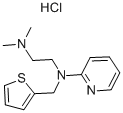
What is METHAPYRILENE HYDROCHLORIDE?
Originator
Thenylene ,Abbott,US,1947
The Uses of METHAPYRILENE HYDROCHLORIDE
Methapyrilene is used as antihistaminic agent.
The Uses of METHAPYRILENE HYDROCHLORIDE
Antihistaminic;Histamine H1 antagonist
What are the applications of Application
Methapyrilene HCl is a specialty product for proteomics research
Definition
ChEBI: A hydrochloride that is the monohydrochloride salt of methapyrilene.
Manufacturing Process
To a slurry of sodamide in 200 cc of toluene representing 6.7 g of sodium was added at 30° to 40°C, 32.3 g (0.31 mol) of 2-aminopyridine. The mixture was heated to reflux temperature and was refluxed for 1? hours. To the resulting mixture was added over a period of approximately one hour a solution of 32 g of freshly distilled N,N-dimethyl-β-chloroethylamine in 40 to 50 cc of dry toluene, The reaction mixture was then heated for 2 hours at reflux temperature. Thereafter, 200 cc of water was added and the toluene layer was separated and washed with water. The toluene was stripped from the mixture by distillation and the residue was distilled under reduced pressure. The distillate was refractionated and the portion distilled at 93° to 103°C/1 mm was recovered. Yield of N-(2-pyridyl)-N',N'-dimethyl-ethylenediamine, 60%.
A solution of 20 g (0.121 mol) of N-(2-pyridyl)-N',N'-dimethylethylenediamine in 25 cc of toluene was added to a slurry of sodamide in 100 cc of toluene representing 2.8 g of sodium. The mixture was refluxed for one hour. To this mixture was added over a period of ? hour a solution of 16 g (0.121 mol) of 2-thenyl chloride in 25 cc of toluene. The resulting reaction mixture was refluxed for 3 hours. Thereafter, water was added and the toluene layer was separated and washed with water.
The toluene was then stripped off by distillation and the residue was distilled under reduced pressure. The main fraction was redistilled. Yield of N-(2- pyridyl)-N-(2-thenyl)-N',N'-dimethyl-ethylenediamine was 69%; BP 130° to 140°C/0.4 mm. A portion of the product was dissolved in ether and an ether solution of hydrogen chloride was added. The monohydrochloride of N-(2- pyridyl)-N-(2-thenyl)-N',N'-dimethyl-ethylenediamine which separated was washed with ether and dried.
Therapeutic Function
Antihistaminic
General Description
White crystalline powder or solid with a faint odor. Bitter taste. pH (aqueous solution) 5.5.
General Description
Methapyrilene hydrochloride,2-[[2-(dimethylamino)-ethyl]-2-thienylarnino]pyridine monohydrochloride (Histadyl) is available as the bitter-tasting, white crystalline powder that is soluble in water(1:0.5), in alcohol (1:5), and in chloroform (1:3). Its solutionshave a pH of about 5.5. It differs structurally from tripelennaminein having a 2-thiophene—methylene group in placeof the benzyl group. The thiophene ring is considered isostericwith the benzene ring, and the isosteres exhibit similaractivity. A study of the solid-state conformation of methapyrilenehydrochloride showed that the trans-conformation is preferredfor the two ethylenediamine nitrogen atoms. The Foodand Drug Administration declared methapyrilene a potentialcarcinogen in 1979, and all products containing it have beenrecalled.
Air & Water Reactions
Water soluble.
Reactivity Profile
METHAPYRILENE HYDROCHLORIDE is light sensitive. Solutions of METHAPYRILENE HYDROCHLORIDE in water, DMSO, 95% ethanol or acetone should be stable for 24 hours under normal lab conditions. . Organosulfides are incompatible with acids, diazo and azo compounds, halocarbons, isocyanates, aldehydes, alkali metals, nitrides, hydrides, and other strong reducing agents. Reactions with these materials generate heat and in many cases hydrogen gas.
Fire Hazard
Flash point data for METHAPYRILENE HYDROCHLORIDE are not available; however, METHAPYRILENE HYDROCHLORIDE is probably combustible.
Properties of METHAPYRILENE HYDROCHLORIDE
| Melting point: | 162° |
| storage temp. | room temp |
| solubility | DMF: 15 mg/ml,DMSO: 10 mg/ml,Ethanol: 1 mg/ml,PBS (pH 7.2): 1 mg/ml |
| form | neat |
| form | Solid |
| color | Off-white to yellow |
| Stability: | Hygroscopic |
| EPA Substance Registry System | Methapyrilene hydrochloride (135-23-9) |
Safety information for METHAPYRILENE HYDROCHLORIDE
| Signal word | Danger |
| Pictogram(s) |
 Skull and Crossbones Acute Toxicity GHS06 |
| GHS Hazard Statements |
H301:Acute toxicity,oral |
| Precautionary Statement Codes |
P301+P310:IF SWALLOWED: Immediately call a POISON CENTER or doctor/physician. |
Computed Descriptors for METHAPYRILENE HYDROCHLORIDE
New Products
Tert-butyl bis(2-chloroethyl)carbamate 4-Methylphenylacetic acid N-Boc-D-alaninol N-BOC-D/L-ALANINOL 3-Morpholino-1-(4-nitrophenyl)-5,6-dihydropyridin- 2(1H)-one Furan-2,5-Dicarboxylic Acid Tropic acid DIETHYL AMINOMALONATE HYDROCHLORIDE 1,1’-CARBONYLDIIMIDAZOLE R-2-BENZYLOXY PROPIONIC ACID 1,1’-CARBONYLDI (1,2-4 TRIAZOLE) N-METHYL INDAZOLE-3-CARBOXYLIC ACID (2-Hydroxyphenyl)acetonitrile 4-Bromopyrazole 5-BROMO-2CYANO PYRIDINE 5,6-Dimethoxyindanone 5-broMo-2-chloro-N-cyclopentylpyriMidin-4-aMine 2-(Cyanocyclohexyl)acetic acid 4-methoxy-3,5-dinitropyridine 2-aminopropyl benzoate hydrochloride 1-(4-(aminomethyl)benzyl)urea hydrochloride diethyl 2-(2-((tertbutoxycarbonyl)amino) ethyl)malonate tert-butyl 4- (ureidomethyl)benzylcarbamate Ethyl-2-chloro((4-methoxyphenyl)hydrazono)acetateRelated products of tetrahydrofuran
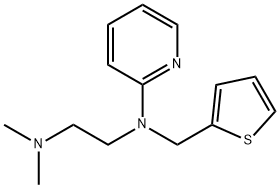
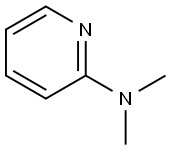

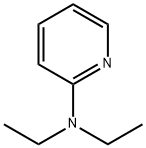

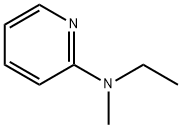

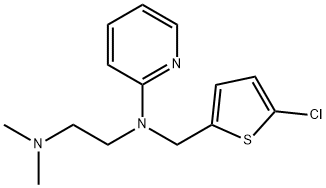
You may like
-
 Methapyrilene HCl CAS 135-23-9View Details
Methapyrilene HCl CAS 135-23-9View Details
135-23-9 -
 1975-50-4 98%View Details
1975-50-4 98%View Details
1975-50-4 -
 2-HYDROXY BENZYL ALCOHOL 98%View Details
2-HYDROXY BENZYL ALCOHOL 98%View Details
90-01-7 -
 2-Chloro-1,3-Bis(Dimethylamino)Trimethinium Hexafluorophosphate 221615-75-4 98%View Details
2-Chloro-1,3-Bis(Dimethylamino)Trimethinium Hexafluorophosphate 221615-75-4 98%View Details
221615-75-4 -
 61397-56-6 CIS BROMO BENZOATE 98%View Details
61397-56-6 CIS BROMO BENZOATE 98%View Details
61397-56-6 -
 14714-50-2 (2-Hydroxyphenyl)acetonitrile 98+View Details
14714-50-2 (2-Hydroxyphenyl)acetonitrile 98+View Details
14714-50-2 -
 118753-70-1 98+View Details
118753-70-1 98+View Details
118753-70-1 -
 733039-20-8 5-broMo-2-chloro-N-cyclopentylpyriMidin-4-aMine 98+View Details
733039-20-8 5-broMo-2-chloro-N-cyclopentylpyriMidin-4-aMine 98+View Details
733039-20-8